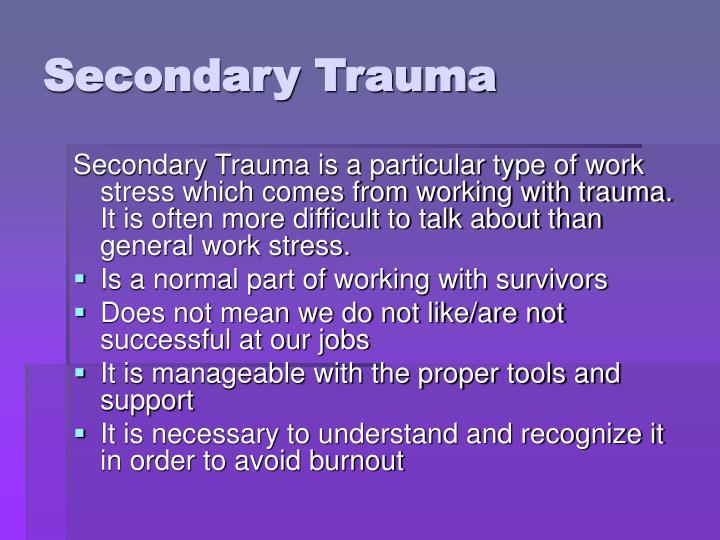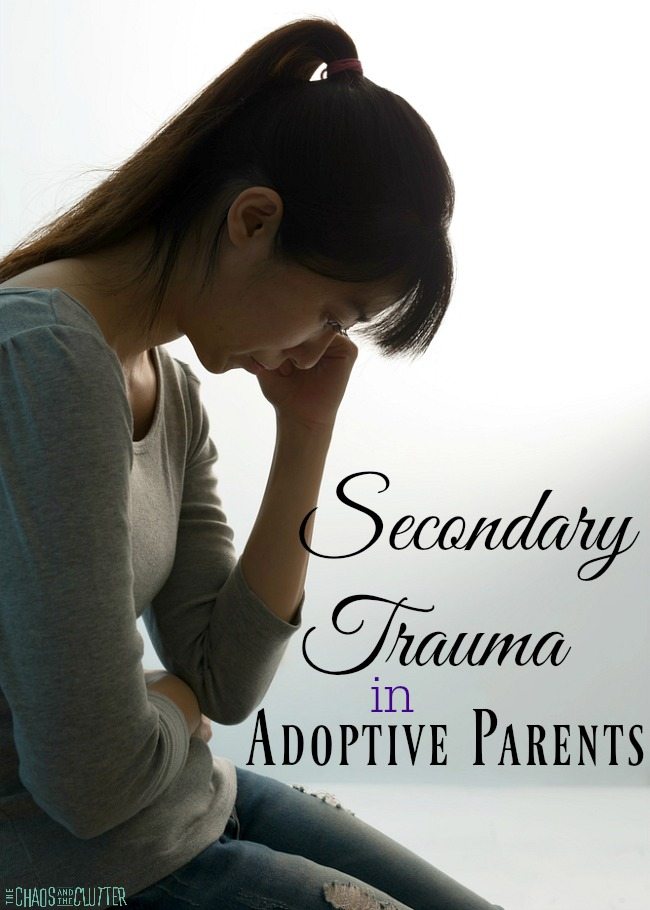

Sometimes even the most seasoned and personally balanced professionals find themselves struggling with secondary traumatization. Helpers can adopt lifestyle and work habits that help them maintain strong practice approaches and personal boundaries that can be protective in relation to a helping role. Relevant Interventions and ApproachesĪddressing compassion fatigue needs to occur at both the individual and organizational levels and falls into two categories: prevention and treatment. Some of the documented negative organizational effects that can result from STS are increased absenteeism, impaired judgment, low productivity, poorer quality of work, higher staff turnover, and greater staff friction. STS can decrease staff functioning and create challenges in the working environment. Staff acquire different ways to cope - some are adaptive, others are not.
SECONDARY TRAUMA PROFESSIONAL
Being exposed to traumatic and troubling events, sometimes on a daily basis, influences one’s personal and professional lives.
SECONDARY TRAUMA HOW TO
Understanding secondary traumatic stress (STS), its effects on staff, and how to alleviate its impact is of concern to agency and organizational leaders. Why Secondary Traumatic Stress is Important for Human Services Agencies However, once recognized, compassion fatigue can be addressed and resolved and the caregiver or helper can heal and even grow from the experience.

These kinds of symptoms can be alarming and personally overwhelming to anyone experiencing them. They may also involve a spiritual component such as questioning meaning or loss of faith. Symptoms often include a combination of cognitive, behavioral, emotional, and physical features. It is preventable and treatable, however, if unaddressed, the symptoms can result in problems with mental and physical health, strained personal relationships, and poor work performance Pryce, Shackelford, & Pryce, 2007).Įvidence of compassion fatigue can be difficult to recognize in oneself or even in others. Additionally, compassion fatigue is associated with a sense of confusion, helplessness, and a greater sense of isolation from supporters than is seen with burnout. The symptoms of compassion fatigue may include feelings of isolation, anxiety, dissociation, physical ailments, and sleep disturbances. Many types of professionals, such as physicians, psychotherapists, human service workers and emergency workers, are vulnerable to developing this type of stress, though only a subset of such workers experience it. It is a set of observable reactions to working with people who have been traumatized and mirrors the symptoms of post-traumatic stress disorder (PTSD) (Osofsky, Putnam & Lederman, 2008 Figley, 1995).

Compassion fatigue, or secondary traumatic stress disorder, is a natural but disruptive by-product of working with traumatized clients.


 0 kommentar(er)
0 kommentar(er)
